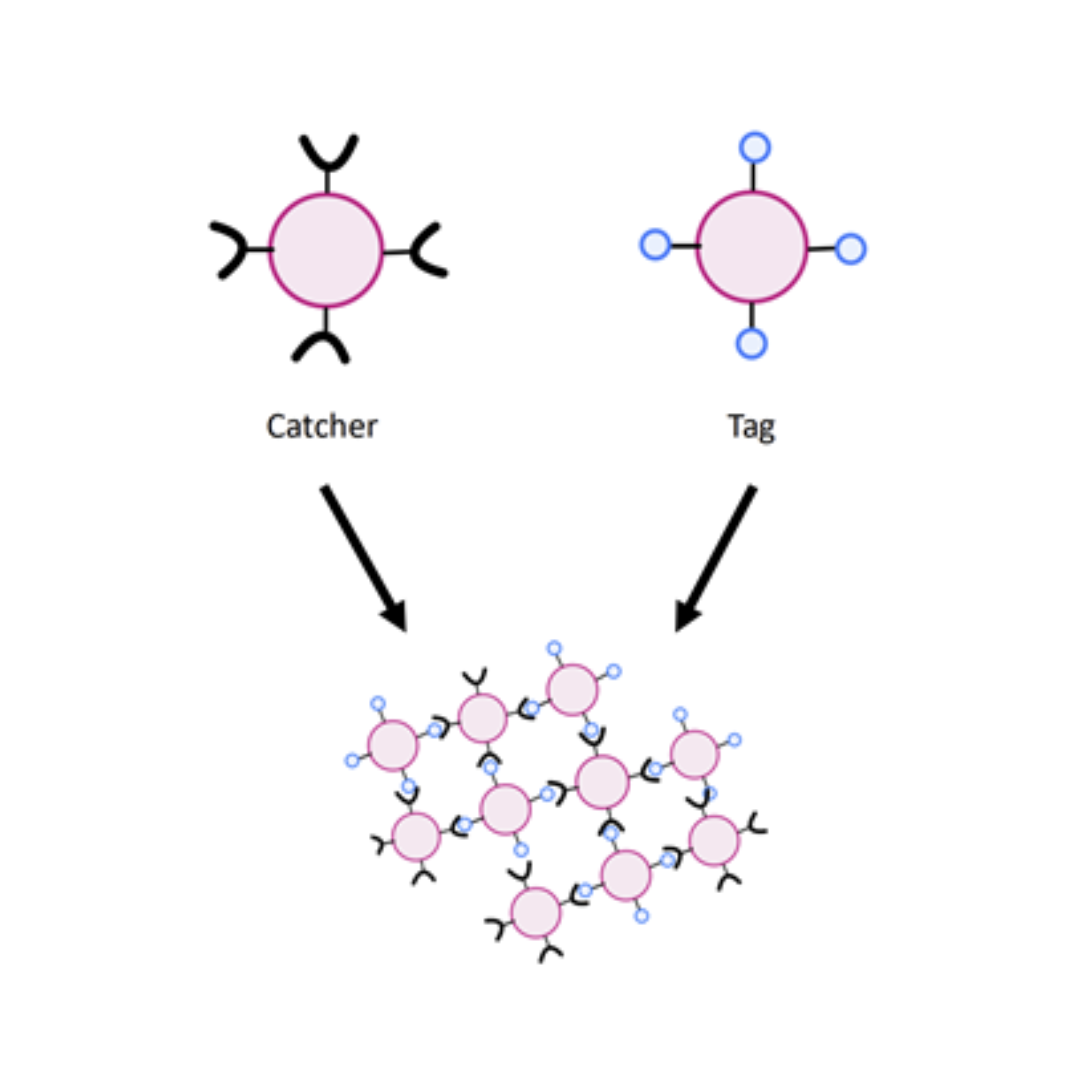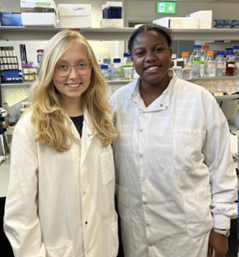Undergraduate researcher helps develop energy-efficient cellular isolation method

Neal linked cells together with special surface proteins called “catcher” and “tag” proteins, enabling more energy-efficient cellular isolation.
February 6, 2025 | By Emily Sherman
UNC-Chapel Hill Chemistry major Tarynn Neal designed her own research experience — and discovered an energy-efficient solution to an industrial-scale problem.
As a member of the Pielak Lab, Neal develops energy-efficient methods to isolate cells using centrifugation. This common industrial purification method separates solid cells from plasma by spinning the multi-component mixtures at high speeds, allowing scientists to isolate cells for protein purification, vaccine production, and drug formulation. Despite its demand and prevalence, the method does have a notable drawback.

“After starting my undergraduate research, I realized we spend hours every day centrifuging,” said Neal. “Even on an academic laboratory scale, spinning the apparatus at high speeds — thousands of rotations per minute — day after day leads to the consumption of a significant amount of energy.”
As a Morehead Cain scholar, Neal had the opportunity to investigate this problem by designing her own summer research experience. After reaching out to the Reagan Group at the University of Edinburgh about a summer collaboration, Neal traveled to Scotland and worked with graduate mentor Hannah Johns. Together, the two grew cells with two specific proteins on their surfaces, a “catcher” and a “tag” protein. When these proteins reacted, they linked the cells together to form dense aggregates, or clusters, that separated from the liquid sample at lower centrifugation speeds. Neal and Jones demonstrated they could isolate their cell aggregates with the same yields at a speed 80% lower than the industry standard, providing a more energy-efficient alternative to traditional centrifugation methods.
“At lower speeds, we’re getting almost the same or better yields than the industry standard,” said Neal. “Knowing we were able to make this area of chemistry more sustainable is exciting for both me personally and others who use this technology. I am so grateful I was able to have that experience and can see how the things I learned are helping me continue to grow into a better scientist.”

